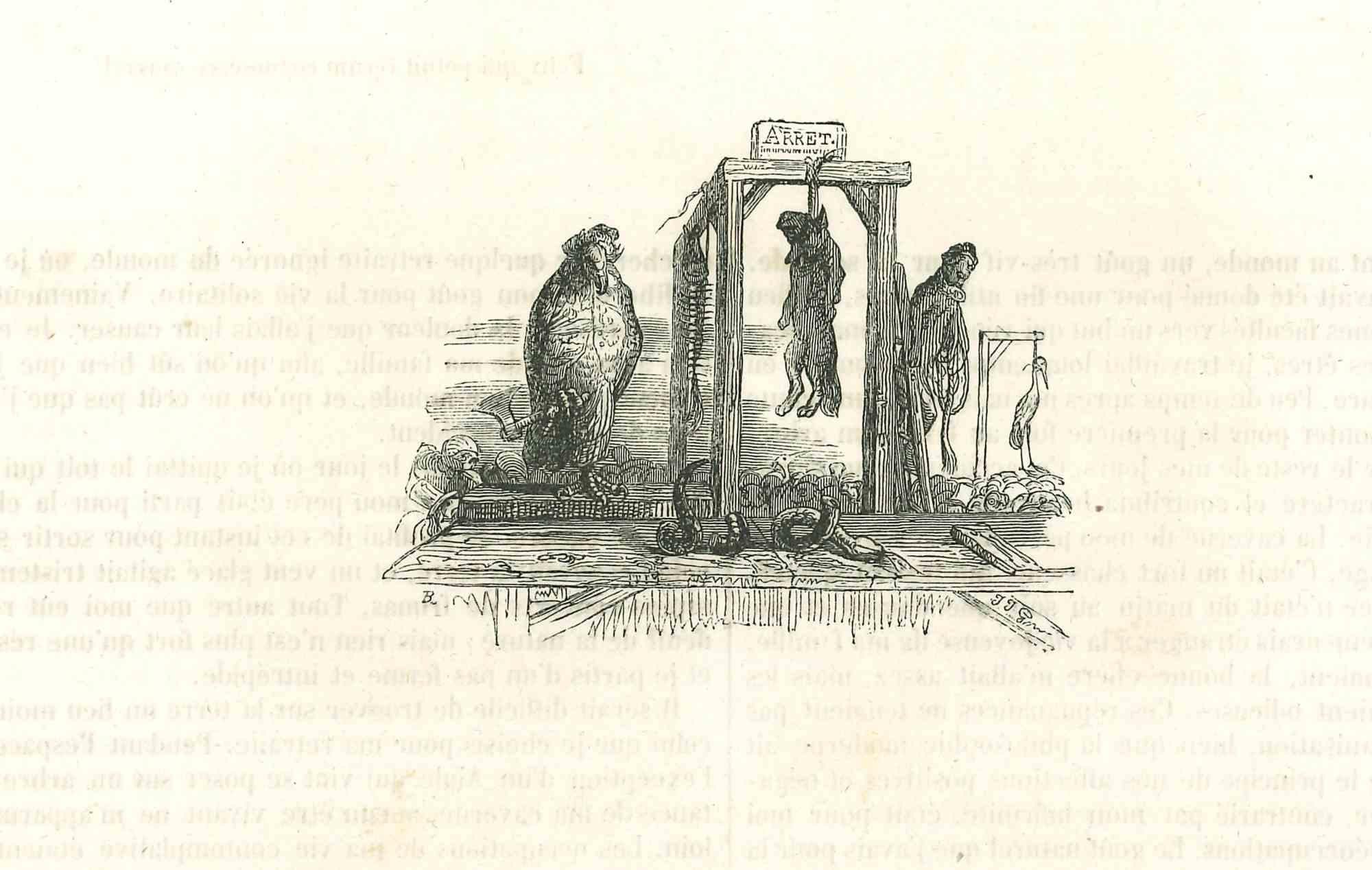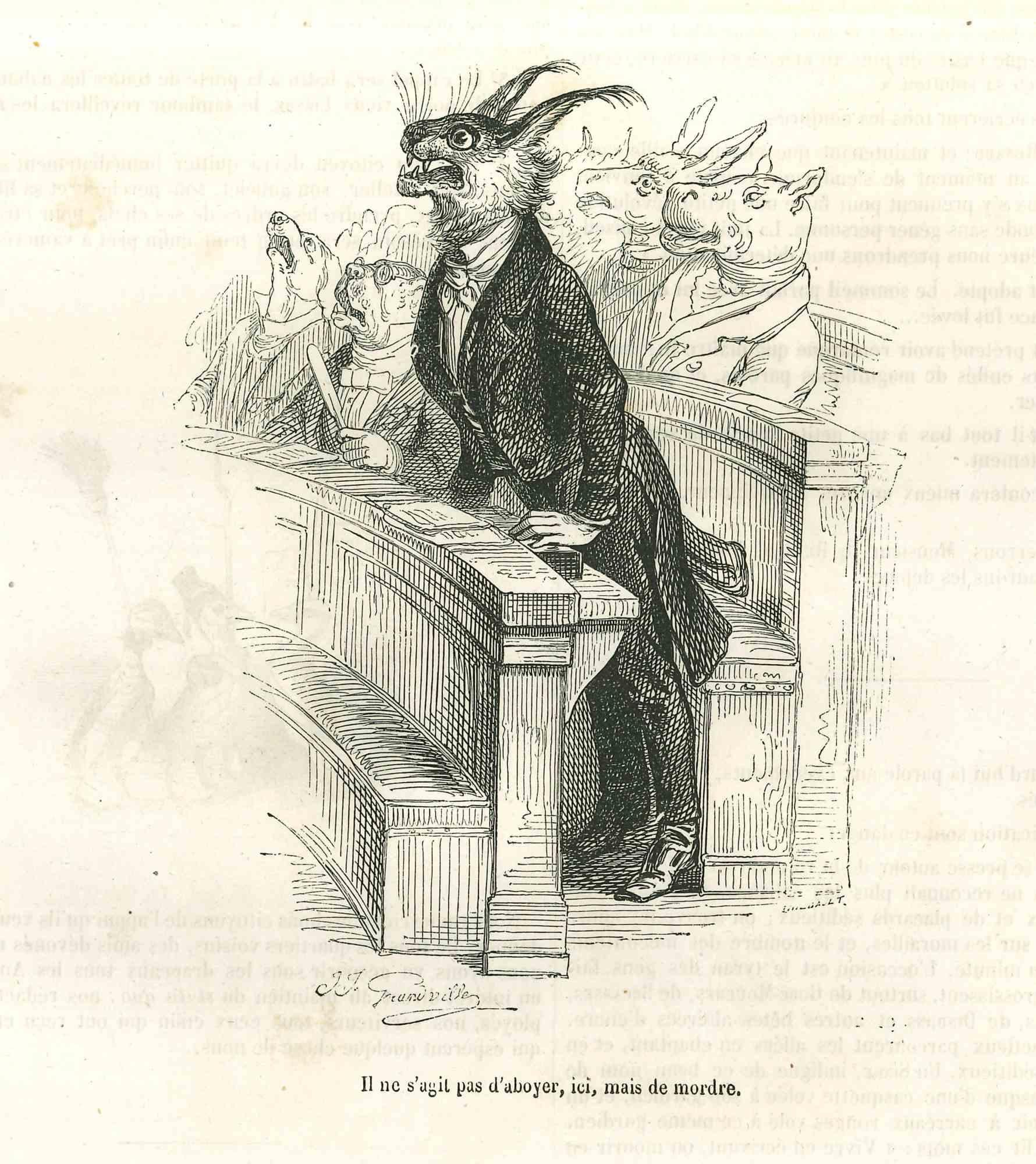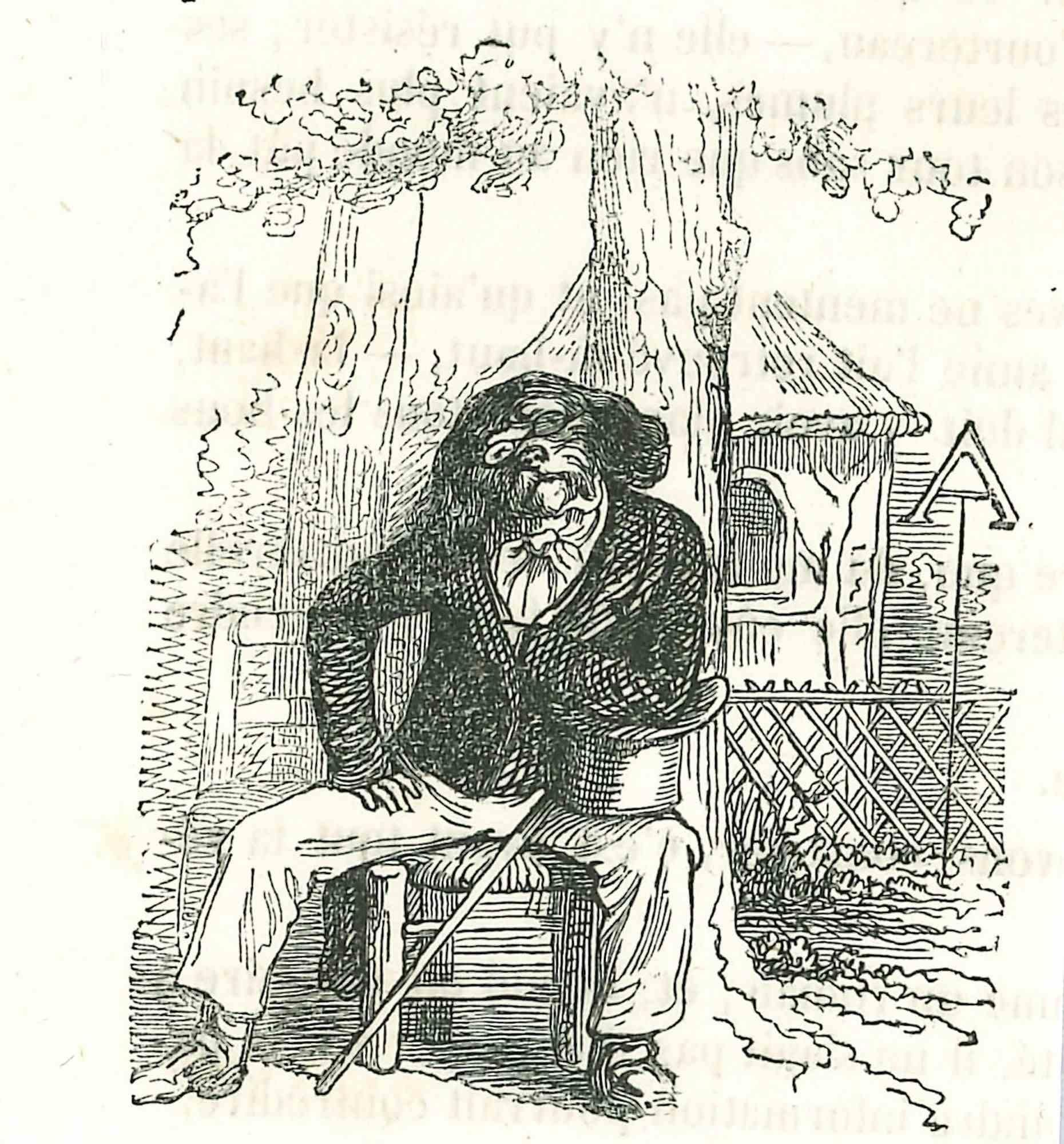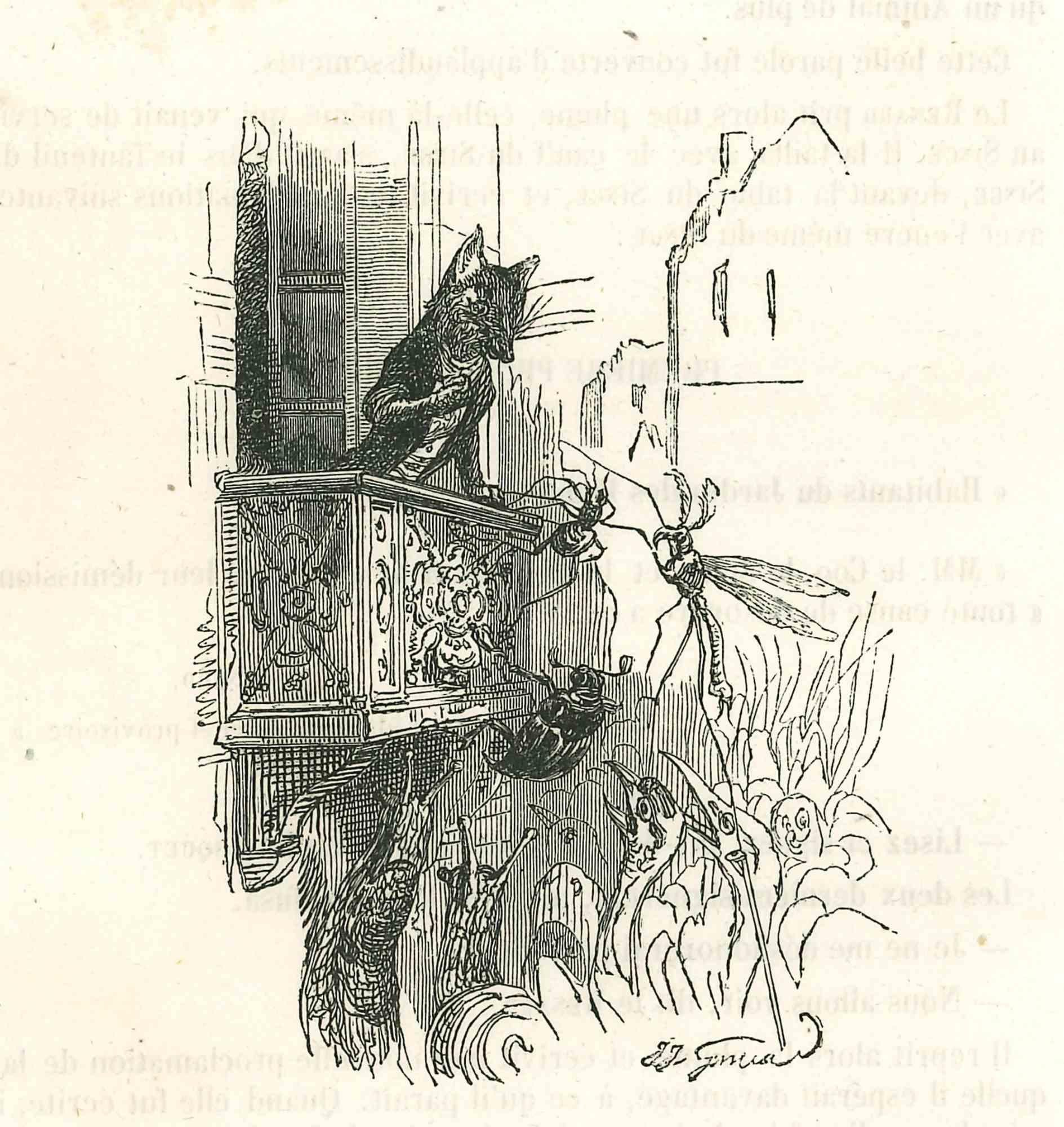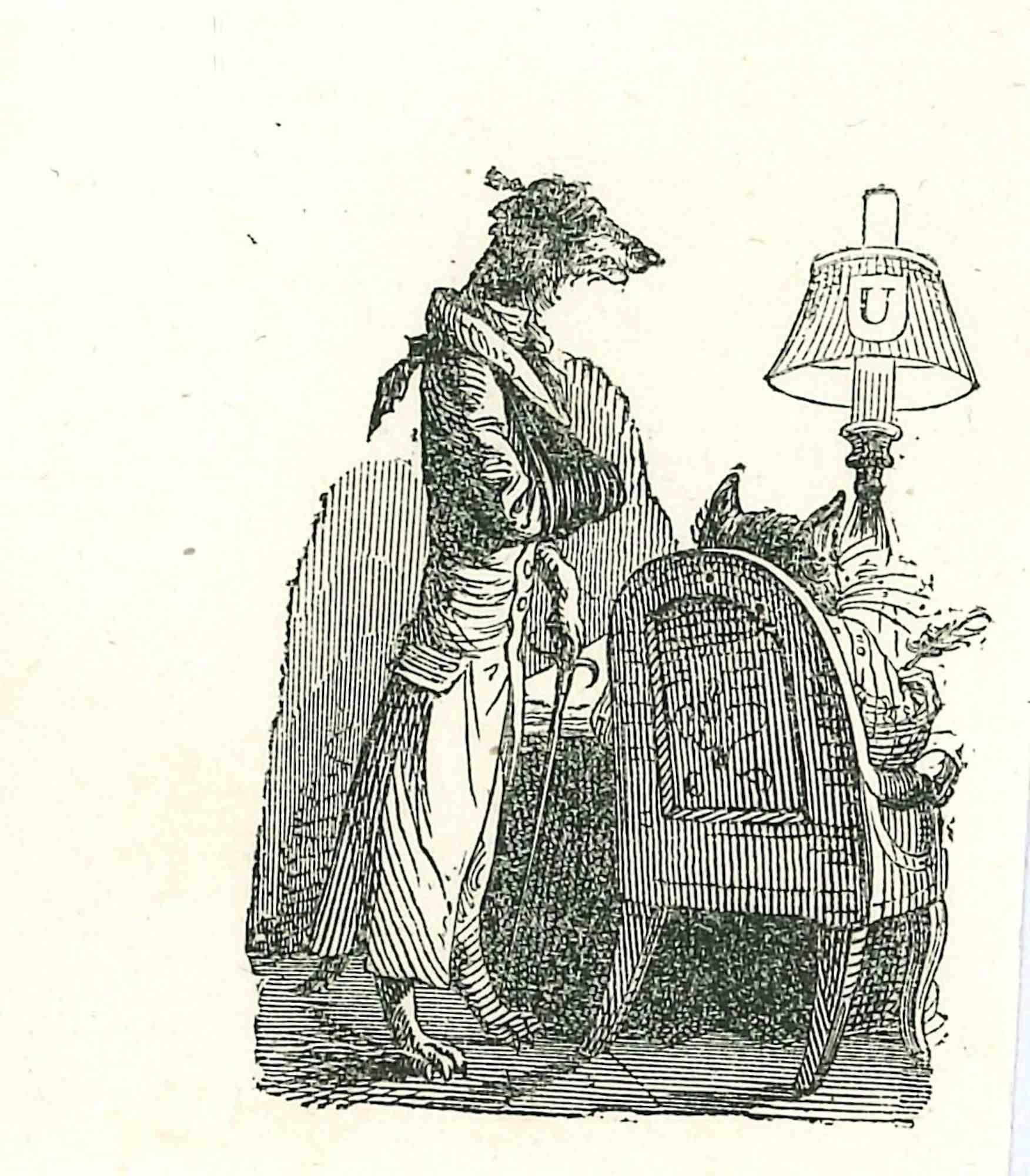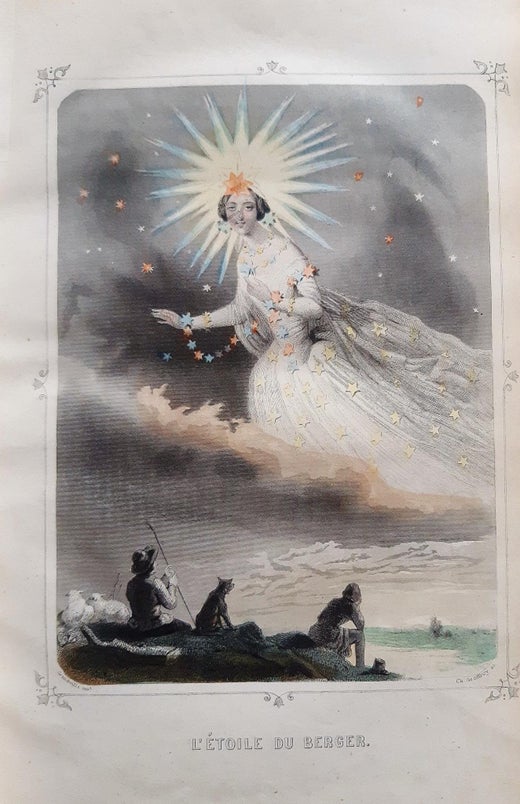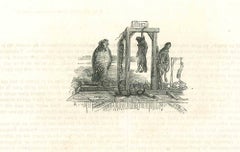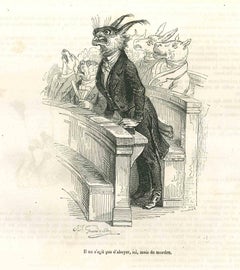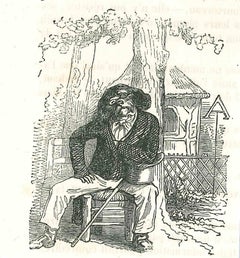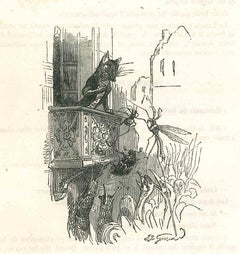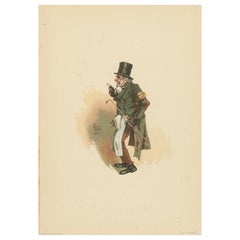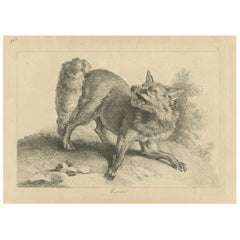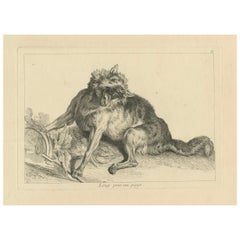J. J. GrandvilleThe Tormented Fox - Lithograph by J.J Grandville - 18521852
1852
About the Item
- Creator:J. J. Grandville (1803 - 1847, French)
- Creation Year:1852
- Dimensions:Height: 1.97 in (5 cm)Width: 1.97 in (5 cm)Depth: 0.08 in (2 mm)
- Medium:
- Movement & Style:
- Period:
- Condition:Insurance may be requested by customers as additional service, contact us for more information.
- Gallery Location:Roma, IT
- Reference Number:Seller: T-1249471stDibs: LU65038970312
J. J. Grandville
Jean Ignace Isidore Gérard, generally known by the pseudonym of Jean-Jacques or J. J. Grandville, was a French caricaturist.
Grandville received his first instruction in drawing from his father, a painter of miniatures. At the age of twenty-one he moved to Paris, and soon afterward published a collection of lithographs entitled Les Tribulations de la petite proprieté. He followed this with Les Plaisirs de tout âge and La Sibylle des salons (1827); but the work which first established his fame was Les Métamorphoses du jour (1828–29), a series of seventy scenes in which individuals with the bodies of men and faces of animals are made to play a human comedy. These drawings are remarkable for the extraordinary skill with which human characteristics are represented in animal facial features.
After the reinstitution of prior censorship of caricature in 1835, Grandville turned almost exclusively to book illustration, supplying illustrations for various standard works, such as the songs of Béranger, the fables of La Fontaine, Don Quixote, Gulliver's Travels, Robinson Crusoe. He also continued to issue various lithographic collections.
Though the designs of Grandville are occasionally unnatural and absurd, they usually display keen analysis of character and marvelous inventive ingenuity, and his humor is always tempered and refined by delicacy of sentiment and a vein of sober thoughtfulness.
Find original J. J. Grandville prints and other art for sale on 1stDibs.
(Biography provided by Wallector)
- ShippingRetrieving quote...Shipping from: Monaco, Monaco
- Return Policy
More From This Seller
View All1850s Modern More Art
Paper, Lithograph
1850s Modern More Art
Paper, Engraving
1850s Modern More Art
Paper, Engraving
1850s Modern More Art
Paper, Lithograph
1850s Modern More Art
Paper, Lithograph
1850s Modern More Art
Paper, Lithograph
You May Also Like
Antique Early 19th Century French Art Nouveau Prints
Paper
Antique Late 19th Century English Prints
Paper
Antique 1740s Prints
Paper
Antique 1740s Prints
Paper
1850s Naturalistic Animal Drawings and Watercolors
Pencil
1840s Conceptual Figurative Prints
Paper, Lithograph
